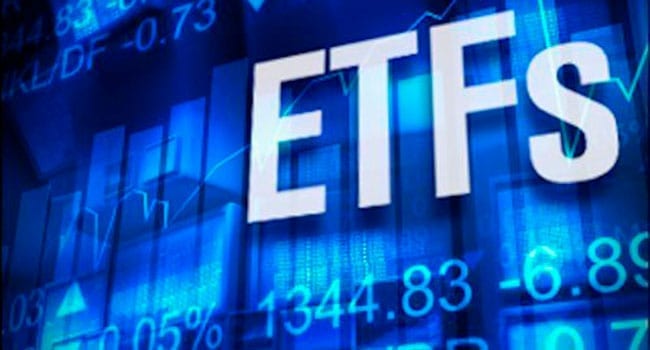 Exchange-traded funds (ETFs) seem to be all the rage. There are more than 600 ETFs traded on the Toronto Stock Exchange and it seems like new ones are being created almost every day.
Exchange-traded funds (ETFs) seem to be all the rage. There are more than 600 ETFs traded on the Toronto Stock Exchange and it seems like new ones are being created almost every day.
An ETF is basically a diversified investment pool that’s very similar to a mutual fund, with the exception that they’re sold or traded on a listed stock exchange. Like mutual funds, some are set up to match the performance of an index (passive management), some are actively managed, you can find them in almost every asset class and they offer diversification.
Diversification or asset allocation provides safety by limiting your exposure to any one investment. Mutual funds and ETFs allow you to buy a basket of investments in one neat package.
The big difference and the reason for their dramatic growth and popularity in the last several years? The fee or cost involved with an ETF when compared to a mutual fund. The management fee is much lower with an ETF. Lower fees often translate to better performance for the investor and that’s a good thing.
Think of an ETF as a low-cost mutual fund that trades on the stock market. Since ETFs trade on the market, the price you pay for an ETF can be more or less than the actual underlying value of the assets, depending on the price investors will pay. While purchasing an ETF for less than its fair market value can be a great deal, it’s buyer beware if the purchase price is greater than the value of the underlying investments. And yes, this does happen.
While fees are important, they’re not the most important thing when it comes to investing. The most important thing is your net after-tax return.
Published returns are usually net of management fees and before taxes. So if you’re comparing the return on a mutual fund to an ETF, be sure not to deduct the fee from the published return. Say you’re looking at an ETF that has a published return of 6.0 per cent and a management fee (or MER) of 0.5 per cent, and a mutual fund with a return of 7.0 per cent and an MER of 2.5. Don’t assume that the return on the ETF is higher because the fee is lower. Many people incorrectly think that the after-fee return on the ETF is 5.5 per cent and that the mutual fund is 4.5 per cent. If the published return is net of fees, as it usually is, the mutual fund return is actually one per cent higher than the return on the ETF, despite a management fee increase of two per cent.
If the only reason you’re buying ETFs is for the low fees, you could be losing out. Investors with as little as $100,000 or less can create their own diversified investment portfolio using individual stocks and bonds. An individual stock and bond portfolio made up of as little as 10 holdings can provide adequate diversification. And if purchased in a discount commission account, there are little to no fees.
Yes, the portfolio will need to be monitored and adjusted over time. But isn’t it worth a little bit of your time to make sure your money is working as hard as possible for you?
Also, keep in mind that if you’re using any type of adviser with your investments and financial planning, these people need to be paid somehow. Often with a mutual fund, part of the MER is paid to the adviser’s company and part to the adviser. With an ETF, often the adviser charges a fee directly to your account, which in some cases can be tax deductible.
So check the math to make sure your ETFs are providing you with a higher after-tax return, after including any fees you’re paying.
Bill Green is an hourly financial and estate planner, public speaker and author of The Success Tax Shuffle. Bill has over 25 years of experience in the financial services industry.
Bill is a Troy Media Thought Leader. Why aren’t you?
The views, opinions and positions expressed by columnists and contributors are the author’s alone. They do not inherently or expressly reflect the views, opinions and/or positions of our publication.


